Cross-country skiing is a fun, low-impact winter workout that lets you glide through snowy trails without needing ski lifts. Whether you're trying the classic method (like walking on snow) or skate skiing (a faster, skating-like motion), getting started is easier than you think - especially with shorter skis like Snowfeet*. These compact skis (15–47 inches) simplify learning, reduce gear hassles, and work with your regular winter boots.
Key Takeaways:
- Classic vs. Skate Skiing: Classic is slower and steady; skate skiing is faster and more dynamic.
- Why Short Skis? Snowfeet* short skis are lightweight, easy to carry, and beginner-friendly.
- Gear Simplified: No need for specialized boots or bulky equipment - just grab your Snowfeet* and go.
- Avoid Mistakes: Focus on balance, weight transfer, and proper technique. Skip long skis if you're just starting out.
Snowfeet* is shaking up the skiing world by making the sport easier, lighter, and more accessible. Ready to hit the trails? Let’s dive into the details!
Basic Cross-Country Skiing Methods
Learning the Classic Diagonal Stride
The classic diagonal stride is the bread and butter of cross-country skiing. It’s like an exaggerated walking motion where you glide forward with each step. To get started, keep your skis parallel and hold your poles at your sides. Push off with your right foot while using your left pole for propulsion, then switch sides, transferring your weight fully from one ski to the other with each stride.
This is where Snowfeet* skis really shine. Longer skis can make weight transfer tricky, but Snowfeet* offers a shorter option - like their 39-inch Skiblades - that provides quick feedback on your balance. This makes practicing the diagonal stride much easier.
To keep things smooth, focus on a steady, rhythmic motion by alternating your arm and leg movements. Practicing on flat, easy terrain is ideal since shorter skis are less cumbersome. Once you’ve nailed the diagonal stride, you’ll be ready to explore the more dynamic V-shaped motion of skate skiing.
Getting Started with Skate Skiing
If you’re ready to take it up a notch, skate skiing is the next step. It’s a faster, more energetic style that feels a lot like ice skating. Instead of moving straight ahead, you push off at an angle with one ski while gliding on the other, creating a V-shaped pattern. This style works best on wider, groomed trails.
For this, Snowfeet* Nordic Cross-Country Skate Skis are a great choice. At around 35 inches, they’re shorter and easier to handle compared to traditional skate skis, which can feel awkward for beginners. The compact design lets you focus on perfecting your skating motion without wrestling with unwieldy equipment.
Start by practicing a basic V-walk without poles. Stand with your skis forming a narrow V, then step from one ski to the other with a slight push-off at an angle. Once you’re comfortable, add poles for extra propulsion. Thanks to the shorter length of Snowfeet* skis, you can even practice in smaller spaces.
For beginners, the "V1" technique is a helpful starting point. With this, you use a pole on every other ski push to coordinate your timing. Snowfeet* skis make it easier to find your rhythm and build confidence.
How to Balance, Turn, and Stop
Whether you’re going classic or skate, balance and control are key. Staying steady on cross-country skis means keeping your weight centered and your knees slightly bent. Long skis can feel wobbly, especially for beginners, but Snowfeet* skis bring your center of gravity closer to the ground, making it easier to stay balanced.
Turning is another skill to master. Start with a step turn: lift the tip of your outside ski, point it in the direction you want to go, step onto it, and then bring your other ski parallel. With Snowfeet* skis - ranging from 35 to 39 inches - this is much simpler than trying to maneuver traditional 80-inch skis.
Stopping is just as important as starting. The classic snowplow or wedge stop works well: push your ski tails apart while keeping the tips together to form a pizza-slice shape. For faster stops, turn your skis perpendicular to your direction of travel. The shorter length of Snowfeet* skis gives you more control and makes stopping less of a workout compared to traditional skis.
Picking the Right Gear for Cross-Country Skiing
Benefits of Snowfeet* Short Skis
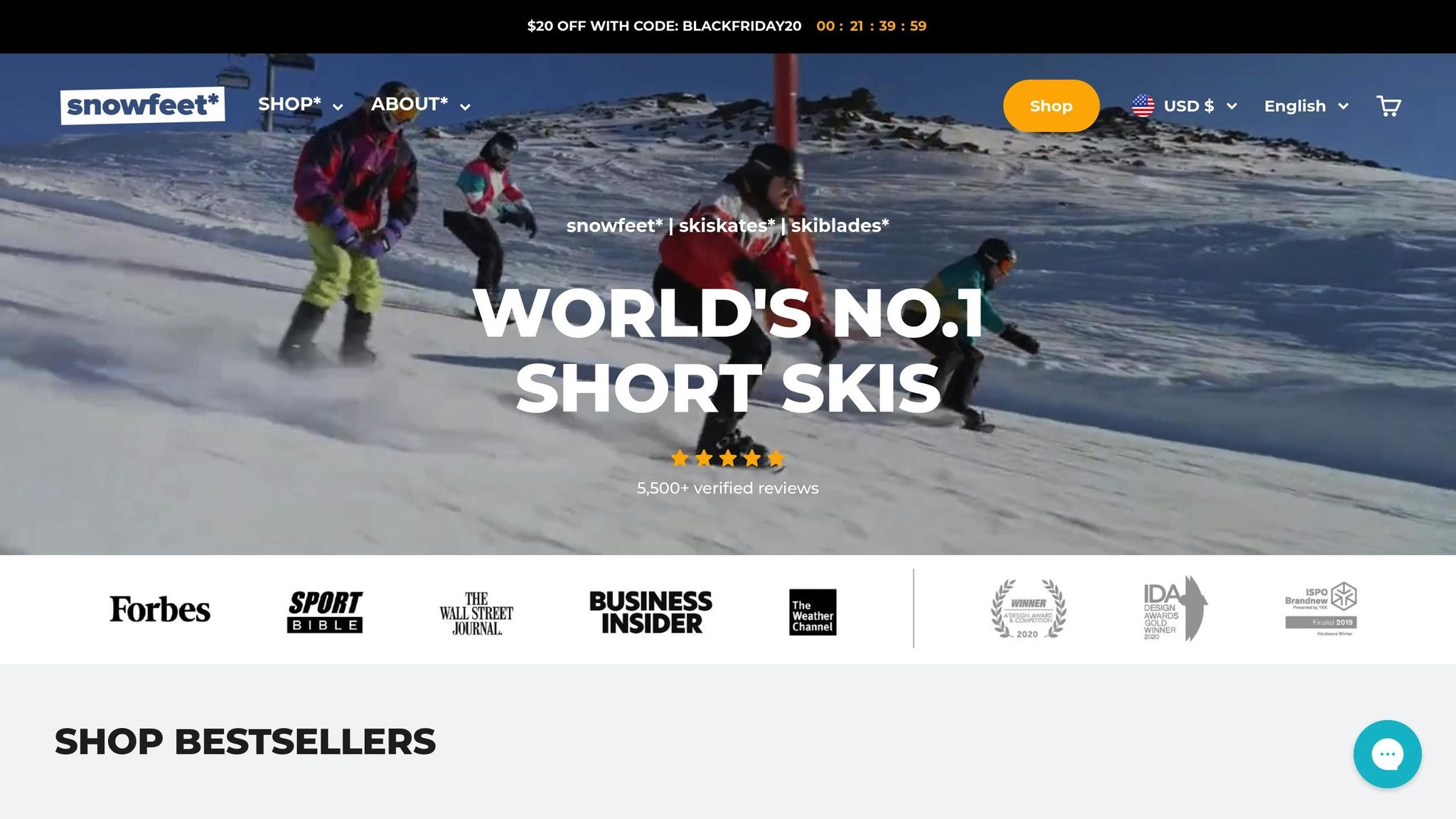
Snowfeet* short skis are changing the game when it comes to cross-country skiing gear. Unlike traditional skis that can stretch up to a whopping 80 inches, Snowfeet* skis are compact, ranging from just 15 to 47 inches in length. This smaller size not only makes them easier to handle but also opens up a whole new level of convenience.
Say goodbye to lugging around bulky equipment. Snowfeet* are small enough to fit into a backpack, eliminating the need for roof racks or oversized ski bags. Whether you’re catching a flight, hopping on public transportation, or just tossing your gear in the car trunk, these skis make travel a breeze. No more stressing over how to transport your gear - you're ready to hit the trails whenever the mood strikes.
Another plus? They’re lightweight. Traditional skis can weigh 3–4 pounds each, which adds up quickly during long outings. Snowfeet* are significantly lighter, reducing fatigue - especially when climbing hills or navigating ungroomed snow. This makes them a fantastic option for skiers who want to enjoy the sport without feeling weighed down.
And here's the kicker: you don’t need specialized boots. Traditional cross-country skiing often requires pricey boots (ranging from $150 to $400) that are compatible with specific bindings. With Snowfeet*, you can use your regular winter shoes, snowboard boots, or even hiking boots. That means fewer expenses and less gear cluttering up your closet.
Snowfeet* also shine when it comes to versatility. Traditional long skis are great for groomed trails, but they’re not ideal for tighter spaces or varied terrain. Snowfeet* handle everything from backyard slopes to winding forest paths, letting you explore areas that might be off-limits with traditional skis.
Snowfeet* vs. Traditional Skis and Snowboards
When you stack them up against traditional skis and snowboards, Snowfeet* short skis come out looking pretty good:
| Feature | Snowfeet* Short Skis | Traditional Cross-Country Skis | Snowboards |
|---|---|---|---|
| Length | 15–47 inches | 70–80 inches | 48–65 inches |
| Weight per pair | 2–4 lbs | 6–8 lbs | 4–7 lbs |
| Storage | Fits in a backpack | Requires roof rack/ski bag | Special board bag needed |
| Boot requirement | Any winter shoe | Specialized XC boots ($150–$400) | Snowboard boots ($200–$500) |
| Terrain flexibility | Works on various surfaces | Best for groomed trails | Best for mountain slopes |
| Price range | $250–$775 | $400–$1,200+ (skis + boots + bindings) | $600–$1,500+ (board + boots + bindings) |
Traditional brands like Rossignol, Salomon, and Fischer have focused on long, specialized skis that demand a hefty investment and plenty of storage space. Snowboarding gear, while fun, also tends to be bulky and expensive. Snowfeet* flips this script by offering a lightweight, easy-to-transport alternative. They’re also beginner-friendly, making them a great choice for newcomers looking to ease into the sport without feeling overwhelmed.
Other Gear You'll Need
While Snowfeet* simplifies your setup, there are still a few essentials to consider for a smooth cross-country skiing experience:
- Adjustable Ski Poles: These are great for balance and propulsion. Look for lightweight poles made of aluminum or carbon fiber, and adjust them to match the terrain. If you’re new to short skis, poles can help you stay steady.
- Layered Clothing: Dress in layers to stay comfortable. Start with a moisture-wicking base layer, add an insulating mid-layer, and finish with a windproof outer shell. Temperatures can swing quickly on the trail, so avoid cotton - it traps moisture and loses warmth.
- Proper Eyewear: Protect your eyes from snow glare with ski goggles or sport sunglasses. Goggles are perfect for stormy weather, while sunglasses work well on sunny days. Remember, UV rays reflect off snow and can cause eye strain or even snow blindness.
- Lightweight Gloves or Mittens: Choose gloves that provide a good grip for your poles. Fingerless gloves with mitten covers are a popular choice, offering both warmth and dexterity.
- Emergency Gear: Always carry essentials like a first-aid kit, whistle, headlamp, and high-energy snacks. If you’re heading into remote areas, let someone know your route and expected return time.
What makes Snowfeet* stand out is how they cut down on the need for extra gear. Traditional cross-country setups often come with a long list of must-haves, but Snowfeet* keeps it simple. You can use gear you already own, making skiing more accessible and less of a financial commitment.
Classic Cross-Country Skiing for Beginners: Everything You Need to Know to Get Started || REI
sbb-itb-17ade95
Common Mistakes to Avoid
Cross-country skiing is a rewarding activity, but beginners often run into a few common pitfalls. Many of these mistakes stem from using traditional, bulky equipment. Snowfeet*, with their shorter and more intuitive design, aim to make learning easier and improve control from the get-go. Let’s take a closer look at technique and gear missteps that can slow down your progress.
Technique Mistakes
Leaning too far forward:
Leaning too far forward can cause problems, especially with traditional skis that are 70–80 inches long, as their tips are more likely to catch. Snowfeet*, ranging from 15–47 inches, reduce this risk significantly, offering a smoother experience.
Poor weight transfer:
Smoothly shifting your weight from one ski to the other is key to effective skiing. Traditional skis can make this feel clunky and unnatural. Snowfeet* simplify the process, making weight transfer feel more like walking or running.
Over-reliance on poles:
It's tempting to lean on poles for balance, but proper leg technique is more important. Snowfeet* perform exceptionally well even without poles, encouraging better form.
Rushing to go fast:
Speed takes practice. Trying to go too fast, too soon can lead to loss of control. Snowfeet* are designed to help you maintain control, even as you gradually build up your speed.
Gear Mistakes
Using the wrong gear can also hold you back. Here are some common equipment-related errors:
Opting for skis that are too long:
Traditional long skis can feel awkward and hard to control. Snowfeet* offer a compact alternative that eliminates the need for complicated sizing charts.
Spending too much on specialized boots:
There’s no need to splurge on expensive, specialized boots. Snowfeet* are compatible with standard winter boots, hiking boots, or even snowboard boots.
Ignoring equipment weight:
Heavy gear can wear you out quickly. Snowfeet* are lightweight, so you can ski longer without feeling drained.
Overthinking maintenance:
Traditional skis often require a lot of upkeep, but Snowfeet* keep things simple with minimal maintenance needs.
Safety and Environment Mistakes
Snowfeet* not only make skiing easier but also simplify preparation, helping you avoid common safety and environmental missteps.
Overdressing:
Cross-country skiing generates plenty of heat, so don’t bundle up too much. A good rule is to dress as if it’s 15–20°F warmer than the actual temperature.
Skipping a snow check:
Heading out without checking snow conditions can lead to trouble. While traditional skis often need specific snow types to perform well, Snowfeet* handle a variety of conditions, from packed trails to fresh powder.
Forgetting trail etiquette:
Respecting trail rules keeps everyone safe. Yield to faster skiers, stay in designated areas, and always stay in control. Snowfeet*'s maneuverability makes it easier to navigate tight or crowded spaces.
Overlooking transportation logistics:
Traditional skis often require roof racks or large bags for transport. Snowfeet* are compact enough to fit in a backpack, making them a breeze to carry.
Not informing someone of your route:
If you’re heading into remote areas, always let someone know your plans and expected return time. Snowfeet*'s portability might tempt you to explore off-the-beaten-path spots, so keeping others informed is essential.
Skiing alone in unfamiliar areas:
While Snowfeet* open up a world of terrain options, it’s best to start in familiar places. As you grow more confident, tackle new challenges with a friend or group for added safety and support.
Tips for Better Cross-Country Skiing
Want to up your cross-country skiing game? It all comes down to practice, taking care of your gear, and fine-tuning your technique. Snowfeet* skis, with their lightweight and compact design, make it easier to control your movements and improve your skills. Let’s dive into some ways you can refine your experience.
Handling Different Snow Conditions
Snow conditions can change in a heartbeat, and adapting your stride is key to staying steady. Snowfeet* skis, thanks to their nimble design, let you adjust easily whether you're gliding over soft, powdery snow or more compact, icy surfaces.
Caring for and Transporting Snowfeet* Skis
Keeping your skis in top shape doesn’t have to be a chore. Snowfeet* skis are not only easy to maintain but also super portable. A little care goes a long way in ensuring they’re always ready for action.
- Regular Waxing: Glide smoothly by applying wax. Liquid wax is great for quick touch-ups, or you can visit a ski shop for a more thorough treatment. Snowfeet* Nordic skis come with a "Fishscales" base, so you can skip the kick wax traditional skis need. However, adding glide wax can still boost your speed.
- Edge Maintenance: Sharp edges mean better control. Use a tuner like Snowfeet*'s sharpening stone or have a professional handle it at a ski shop. Focus on keeping the base edges in good shape.
- Post-Use Care: After skiing, dry the metal edges completely to avoid rust. A light coat of oil before storage can help keep them in excellent condition.
- Binding Adjustments: For safety and performance, adjust your bindings at home with a screwdriver while wearing your boots. If you have smaller shoes, use different strap holes and trim extra strap length. For larger snowboard boots, replacement front toe straps are available, and for smaller boots, back ankle straps can be swapped out.
- Easy Transportation: At just 90 cm for the Nordic model, these skis are some of the shortest around. Toss them in a backpack, and you're good to go.
Building Stamina and Getting Better
Snowfeet* skis remove many of the common hurdles that make learning tricky, letting you focus on improving your stamina and technique. Here’s how to make steady progress:
- Start Small: Begin with 30–45 minute sessions and gradually work your way up. The lightweight design of Snowfeet* skis means you won’t feel as fatigued as you might with heavier gear.
- Explore Varied Terrain: Unlike traditional skis that often confine beginners to groomed trails, Snowfeet* let you practice almost anywhere - backyards, parks, even hiking trails. This flexibility helps you build confidence and skills in diverse settings.
- Focus on Rhythm and Cross-Training: Find a natural, steady rhythm on the snow and complement your skiing with off-snow training. Activities like hiking, cycling, or running can boost your endurance and core strength. Plus, with Snowfeet*’s portability, you can bring them along on outdoor adventures and practice wherever inspiration strikes.
Why Snowfeet* is the Future of Cross-Country Skiing
Cross-country skiing is changing, and Snowfeet* is shaking things up with a fresh take on how we glide through winter. While big names like Rossignol, Salomon, and Fischer stick to the traditional long and heavy ski designs, Snowfeet* is rewriting the playbook with a focus on simplicity, portability, and fun.
Snowfeet*'s short skis are a game-changer. Traditional skis, which can stretch anywhere from 170 to 210 cm, are bulky and tricky to transport. In contrast, Snowfeet*'s compact design makes them easy to carry, store, and use. Whether you’re heading to a local trail, your backyard, or packing for a weekend getaway, you won’t need roof racks or a complicated setup. Just toss them in your bag, and you’re good to go.
Learning to ski with Snowfeet* is also a breeze. Unlike traditional setups that often require a steep learning curve (and let’s be honest, who loves waxing skis?), Snowfeet* keeps things simple. Their design helps beginners feel comfortable right away, skipping many of the technical headaches that can scare off newcomers.
Another standout feature? Versatility. Snowfeet* skis work with gear you probably already own - whether it’s regular winter boots, snowboard boots, or ski boots. That means no need to invest in pricey, specialized footwear. Plus, this flexibility lets you easily switch between different winter activities, making Snowfeet* a more practical and budget-friendly option for casual adventurers.
Speaking of budgets, Snowfeet* is a wallet-friendly choice. Starting at $250 for their Mini Ski Skates, they’re a far more affordable entry point compared to many premium traditional setups.
The brains behind Snowfeet*, Zbynek and Michael, are on a mission to transform winter sports. Their invention isn’t just a tweak to existing gear - it’s the foundation of a whole new sport: skiskating. Their belief that smaller skis offer a better, more inclusive experience is driving this shift. They’re not just making skiing easier; they’re making it more accessible to everyone.
Snowfeet* isn’t just an alternative to traditional skis - it’s a glimpse into the future of cross-country skiing. With their focus on portability, ease of use, and affordability, they’re opening up the sport in ways long skis simply can’t.
FAQs
How do Snowfeet* short skis compare to traditional cross-country skis for beginners in terms of ease of use?
Snowfeet* short skis are a fantastic option for beginners. Why? They’re lightweight, compact, and much easier to handle compared to traditional cross-country skis. Thanks to their shorter length, they’re easier to maneuver, helping you balance and navigate with confidence - even if it’s your first time on the snow.
Unlike traditional skis from well-known brands like Rossignol or Atomic - which can feel bulky and take more time to get the hang of - Snowfeet* short skis make learning quicker and less intimidating. They’re ideal for anyone who wants to hit the trails without spending hours mastering technique. On top of that, their small size means they’re super easy to pack and store, making them perfect for travel and hassle-free adventures.
What are the best techniques to improve balance and control when using Snowfeet* skis for cross-country skiing?
To get better balance and control with Snowfeet* skis, start by standing with your feet about shoulder-width apart. You can also try placing one foot slightly ahead of the other to feel more stable. Keep your posture upright and focus on distributing your weight evenly, staying centered over the middle and back of your feet. This will give you better control while you glide.
When you're ready to move, practice smooth gliding by pushing off with one foot and keeping a steady rhythm. Let your arms help you balance, and aim for fluid, natural movements. Since Snowfeet* skis are lightweight and super portable, they’re easier to handle than traditional skis. Use that to your advantage as you gain confidence and refine your technique.
Can I use Snowfeet* skis in different snow conditions, and how should I adjust my technique?
Yes, you can use Snowfeet* in all sorts of snow conditions, though you might need to tweak your technique a bit for the best experience. These mini skis are built to be lightweight and versatile, making them a great choice for beginners and intermediate skiers alike. Plus, their small size and ability to work with regular winter boots give them an edge over traditional skis or snowboards, especially in softer or packed snow.
To get the most out of them, focus on your balance and adjust your movements based on the snow's texture. In softer snow, keep your weight centered to avoid sinking. On firmer, packed surfaces, aim for smooth, controlled glides. Thanks to their portability and simple setup, Snowfeet* are an awesome option for trying out different snow terrains without lugging around bulky gear.





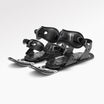

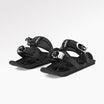
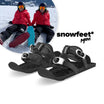

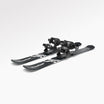

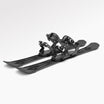
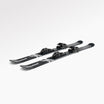
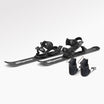






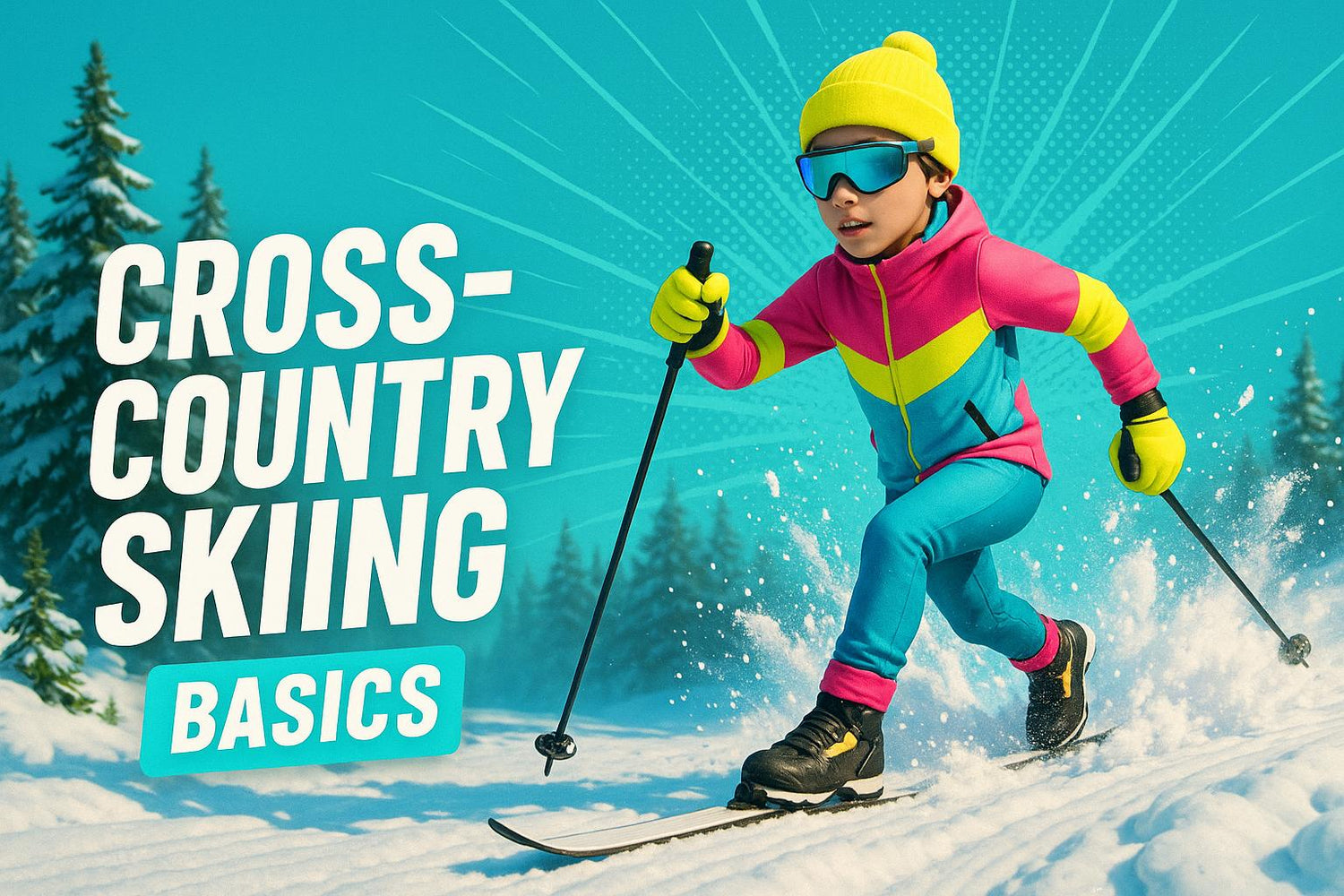
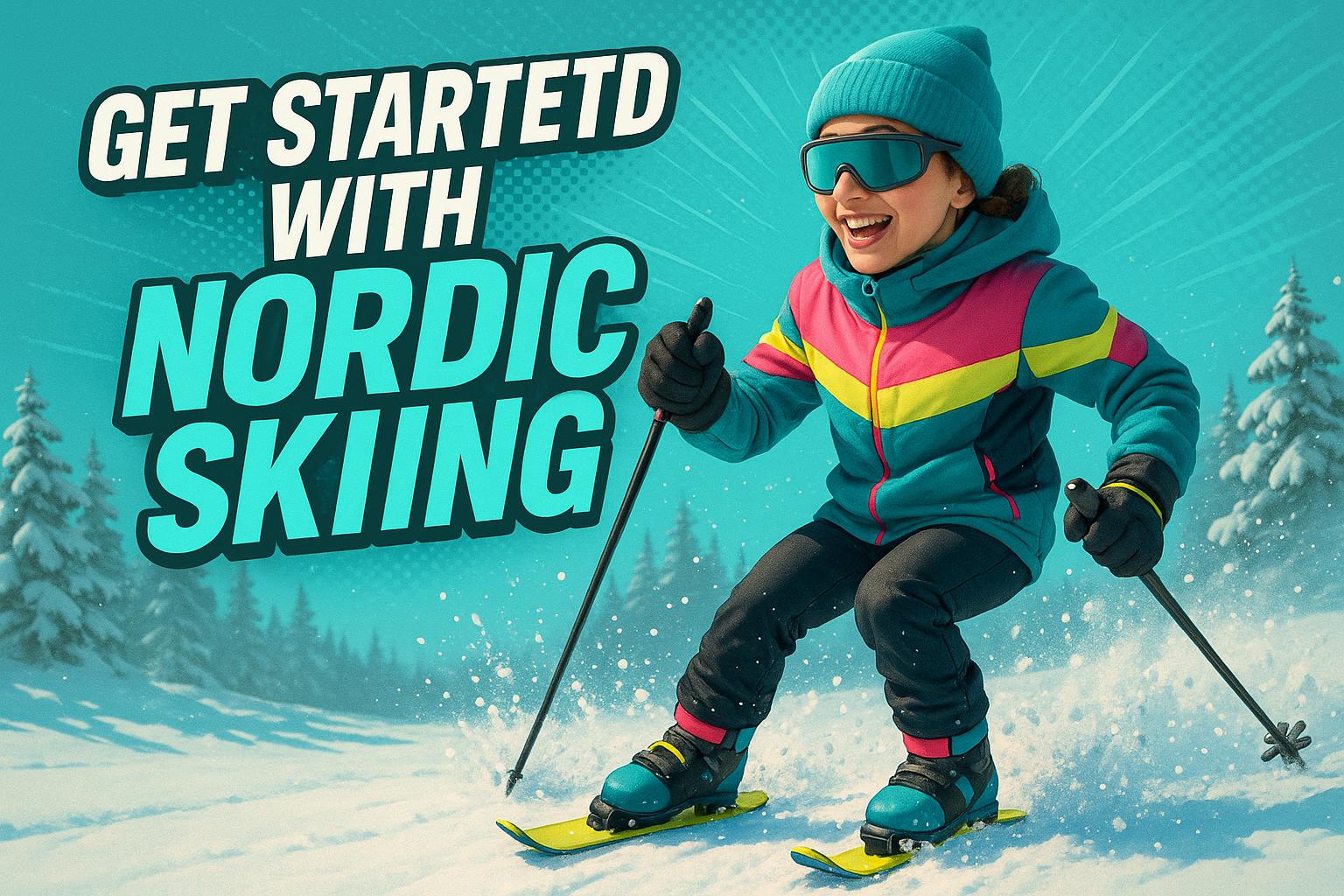
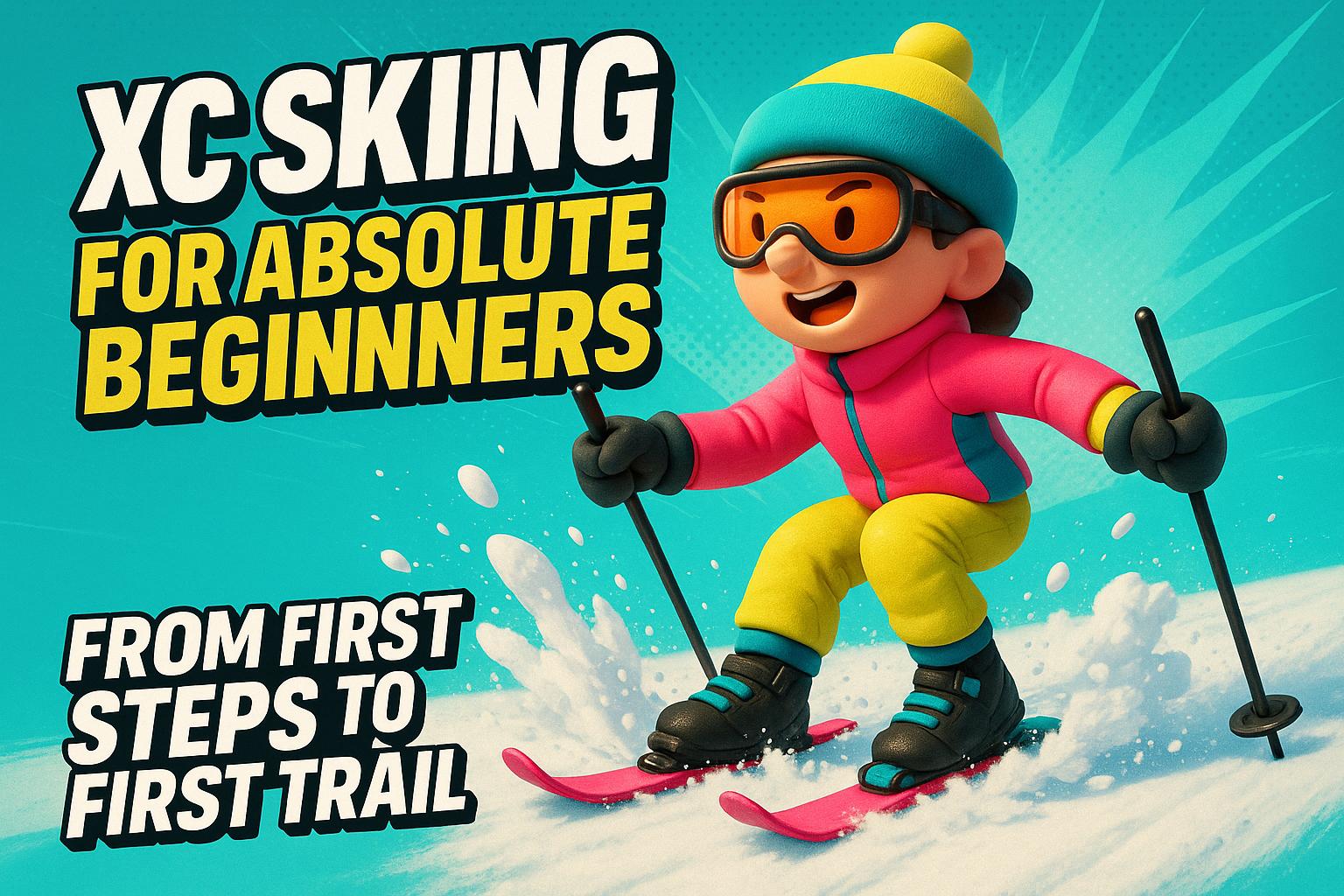
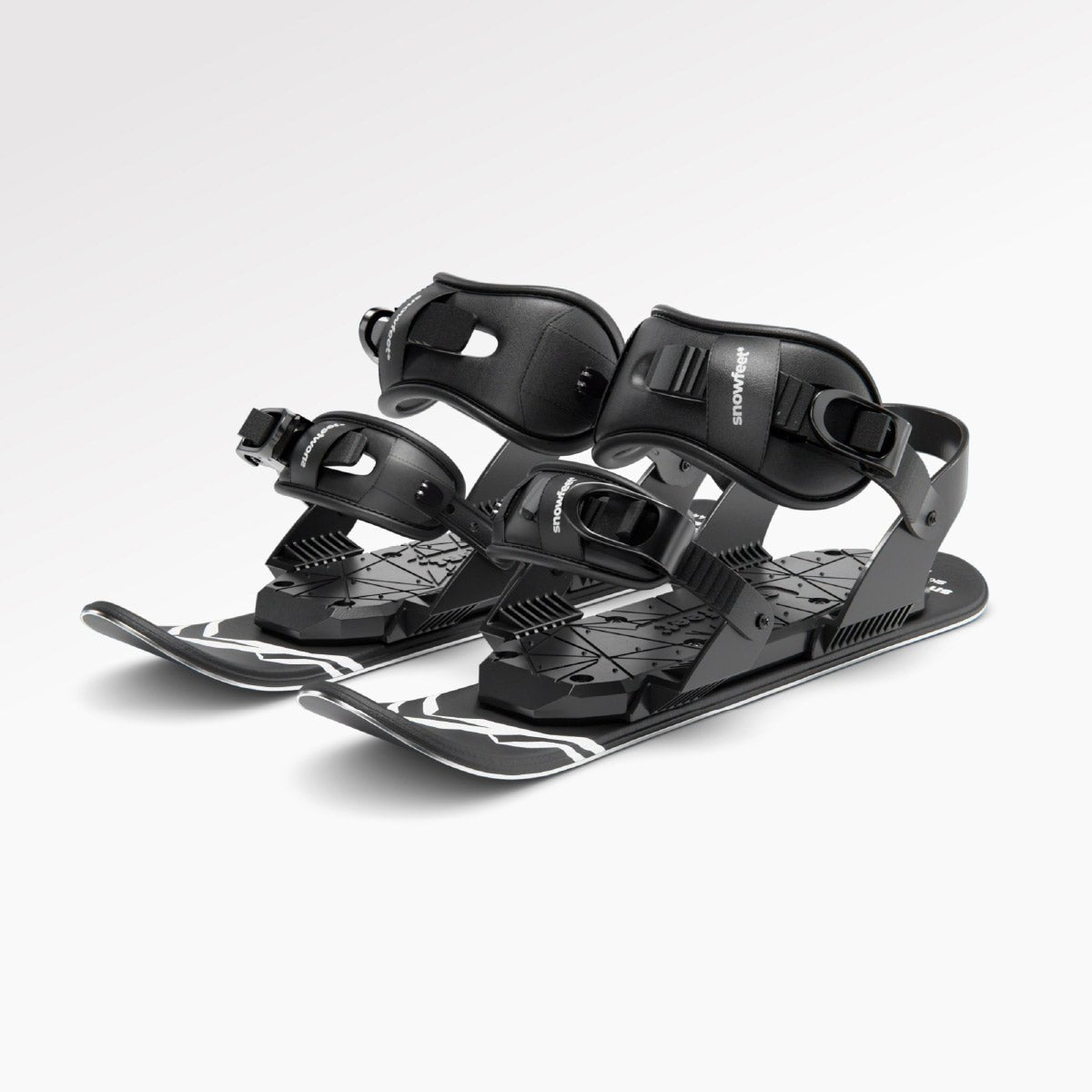

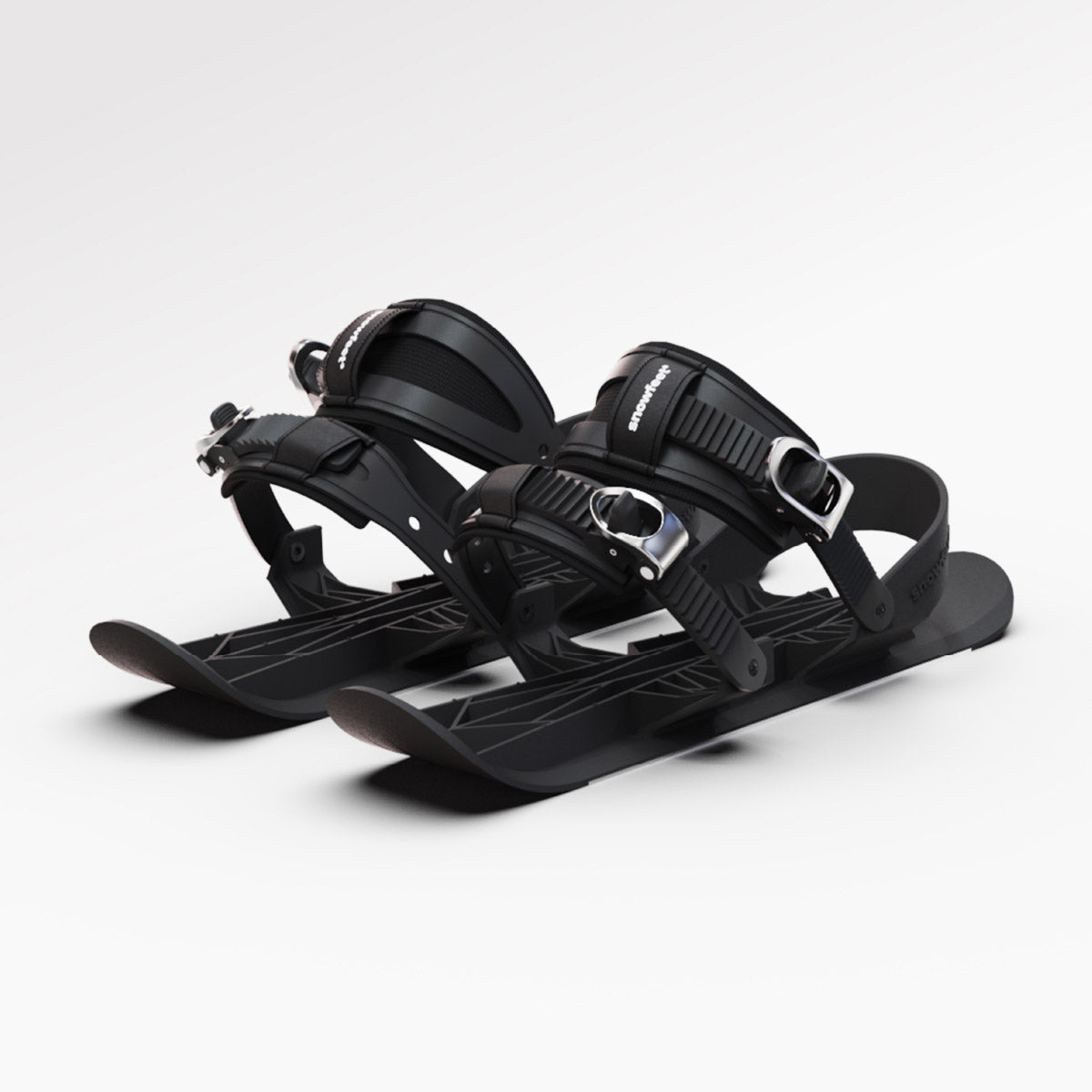

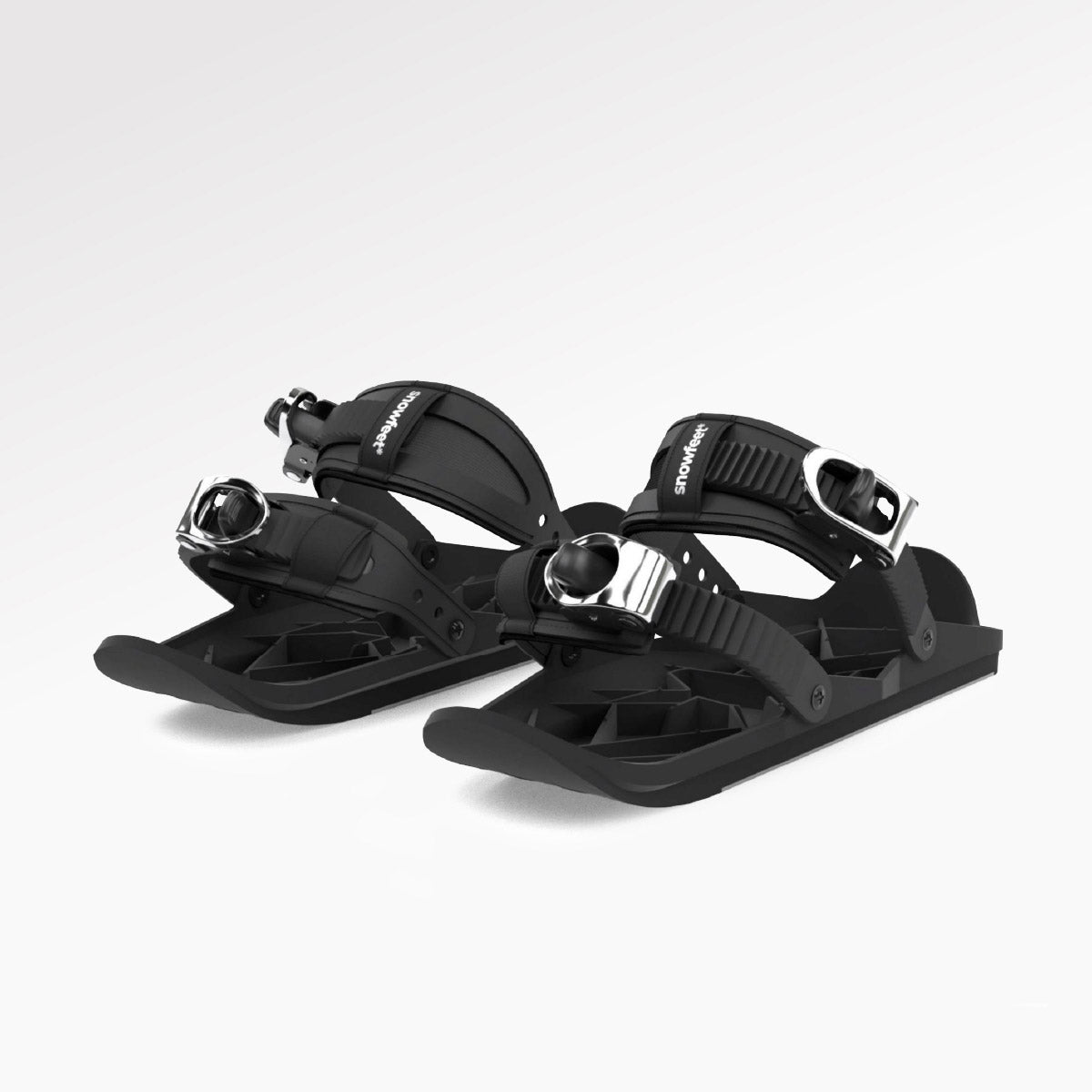



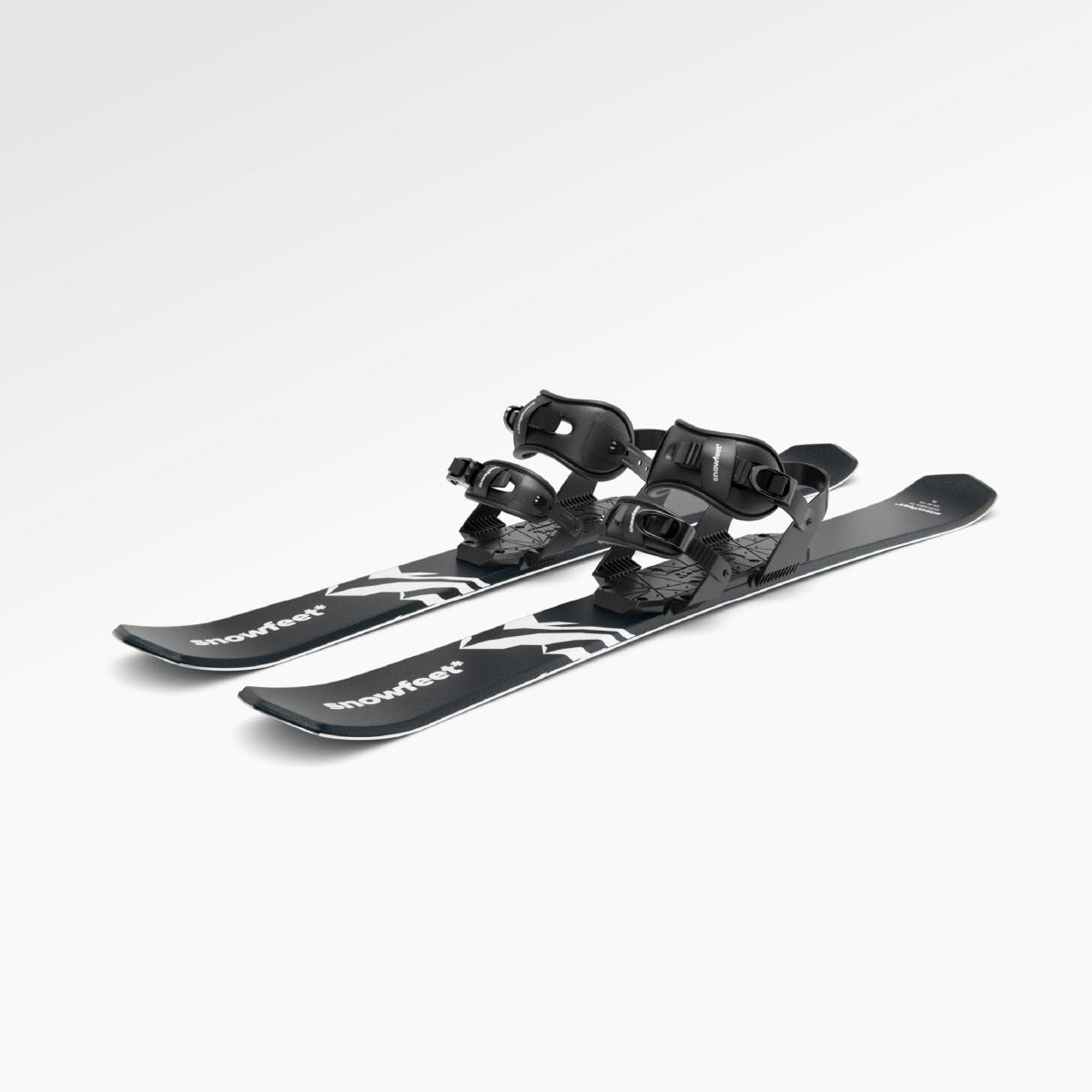

Legg igjen en kommentar
This site is protected by hCaptcha and the hCaptcha Privacy Policy and Terms of Service apply.